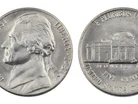Focus on: Nickel, a key metal in the EV revolution

What is nickel?
Nickel is a silvery-white metal with a golden tinge. It is found in the earth's crust, often in combination with iron, and is known for its resistance to corrosion and its ability to maintain a polished appearance, which is why it is used in coinage. Nickel also has magnetic properties and can be alloyed with other metals to enhance their characteristics.
What are the industrial uses of nickel?
By far the biggest consumer of nickel is the automotive sector, which uses it in batteries for electric vehicles.
Nickel is also used extensively in the production of stainless steel, to which it gives strength. The aerospace industry, meanwhile, uses nickel-based superalloys in jet engines due to their ability to withstand high temperatures.
Nickel is also used in electroplating to provide a protective and decorative coating, while the chemical industry uses it as a catalyst in various processes, including the production of margarine and the refining of petroleum.
Which countries are the leading producers of nickel?
Indonesia has emerged as the world's largest producer of nickel, having significantly increased its output in recent years. The Philippines is another major producer, with substantial nickel ore exports.
Russia, through its mining company Norilsk Nickel, is another major player.
Australia and Canada also maintain substantial nickel mining operations.
Which countries are the leading consumers of nickel?
China is the world's largest consumer of nickel, driven by its huge stainless steel industry and its growing electric vehicle sector.
The United States is another significant consumer, with demand coming from its aerospace and defence industries. In Europe Germany and Italy, are notable consumers, due to their large manufacturing sectors, particularly automotive.
India's consumption is growing fast, fuelled by its expanding stainless steel production capacity.
How is nickel processed?
The processing of nickel begins with the extraction of nickel-containing ores. These ores are either sulphide ores or laterite ores, and each requires different processing methods.
For sulphide ores, the process involves crushing, grinding, and flotation to produce a concentrate. This concentrate is then smelted and refined to obtain pure nickel.
Laterite ores are processed using pyrometallurgical or hydrometallurgical methods. The pyrometallurgical approach involves heating the ore to high temperatures in a furnace, while the hydrometallurgical method uses chemical processes to extract nickel.
The final stages of processing often include electrolysis to produce high-purity nickel suitable for various industrial applications.
What has caused the global crash in nickel prices?
In 2022, the supply of nickel – a key metallic input for electric vehicle (EV) batteries – exceeded demand by 112,000 tonnes, the largest surplus since 2014. These figures were provided by the International Nickel Study Group (INSG), a UN-related intergovernmental organisation.
The cause of the nickel price crash is Indonesia, where the government is set on turning the country into a major hub for battery metals.
Indonesia's mined nickel production expanded by 48% to 1.58 million tonnes in 2022, according to the INSG. The country now accounts for about half of global output.
The nickel mining boom is also feeding a nickel processing boom, with the production of nickel pig iron growing by 32%, and output of intermediate nickel products nearly tripling to 288,000 tonnes in 2022.
Which country has been hardest hit by the nickel slump?
Australia, whose influence as the one-time world leading producer of nickel is in tatters. Australian mining giant BHP is to suspend its domestic nickel operations, with BHP President Australia Geraldine Slattery saying the move was “difficult but necessary”, given the global surplus is expected to last for at least three years and that “efforts to find a “viable path forward” had been exhausted”.
BHP's nickel business employs around 3,000 people, including 1,600 front-line staff. The company said the “temporary suspension” will be reviewed in February 2027.
Indonesia blindsided Australia to become the world's top refined nickel producer, after it spent a decade banning raw nickel exports in a bid to make itself a major producer of processed nickel. This saw it move up the supply chain and vastly increased the value of its nickel exports.
The Indonesian nickel industry has been backed heavily by Chinese investment, who need huge supplies to sustain its colossal EV manufacturing sector. In February 2024 Nickel prices bombed, following a global supply glut from Indonesia engineered by China. The global price fell from a high of US$50,000 in 2022 to just $16,400 per tonne.
- UK Follows US Lead on Forging Mineral Ties With IndonesiaSupply Chain & Operations
- Top 10: World's Largest Nickel MinesSupply Chain & Operations
- Why Nickel Price Slump has hit BHP so HardSupply Chain & Operations
- The Battle for Control of Rare Earth Minerals Supply ChainSupply Chain & Operations




